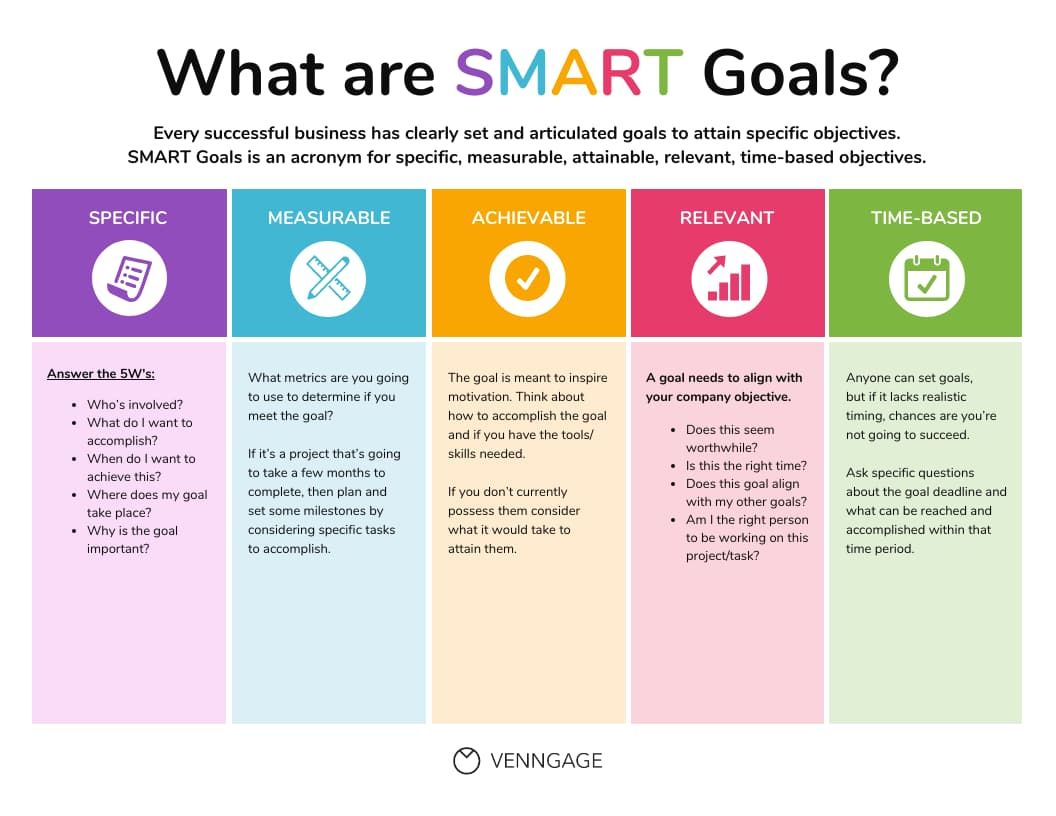Part of the 6 Part Series of Strategy to Build Your Brand.
Welcome to part two! Now that you have the foundation of your business model in place, it’s time to start building the next level. As any
mentor will advise, before rushing into any marketing, it’s important to take the time to set some goals for the business. Your goals should tie into your overall business mission and vision statements - because those statements form your ‘why’; so any goals you set are steps on your path toward achieving them.
If you’ve been in business or marketing for a little while, you’ll already be familiar with vision and mission statements. Some of the best known vision statements include Disney: ‘To make people happy‘ and Ikea: ‘To create a better life for everyday people’. Famous mission statements include Patagonia: ‘We’re in business to save our home planet’ and Nike: ‘To bring inspiration and innovation to every athlete* in the world. *If you have a body, you are an athlete’. Vision and mission statements are often confused for being the same thing, but there are some core differences between the two. Let’s take a look.
This is an aspirational description of what a business would like to achieve in the long-term. Dream big and focus on success. Infuse your vision statement with passion and emotion!
This is where you define your business’ goals in at least three dimensions: what the business does for its customers, what it does for its employees, and what it does for its owners. This description should be polished and concise. It is perfectly fine to keep refining along the way!
Though they are short, your vision and mission statements have a huge impact on the direction of your business, as well as your brand reputation and customer connection. Take time to workshop different ideas - and think big!
Working with a mentor is a great way to ensure your vision and mission statements are as strong as possible. Not only are they experts well-versed in the brand arena, they can also offer the fresh perspective of someone outside of the business - which is an extremely valuable part of the creative process.
Once you’ve refined your ‘why’, it’s time to set objectives.
What do you hope to achieve and maintain as you grow your business? As a business owner, you are concerned with every aspect of your business and so will need to have clear goals in mind. Having a well-defined list of business objectives provides direction and becomes a foundation to your digital strategy. Remember to create S.M.A.R.T goals for your business!

How you set your business objectives is entirely up to you, and which aspects of the business you feel is a priority. You may like to consider developing goals towards: Profitability, Productivity, Marketing, Customer Service, and Core Values.
Our mentors can help you decipher which are the most important priorities for your business.
Example: To drive profitability up by 100% within 2 months, by launching social media and email marketing campaigns to lead customers to products/services.Example: To improve services/products by conducting and collecting 100+ online survey responses of my target market within 4 weeks.Congratulations! You’ve completed part two of building your brand. Now that we’ve built your proverbial house with your business model, vision and mission statement and objectives - it’s time for the people (your customers to come). More on that, in part 3!
Want to learn from the best to set your business up for success? Our Digital Solutions Program offers a number of mentoring opportunities with entrepreneurs who have expertise across a wide range of industries. If you want to create the strongest business model to bring your dream to life, find out more here.


